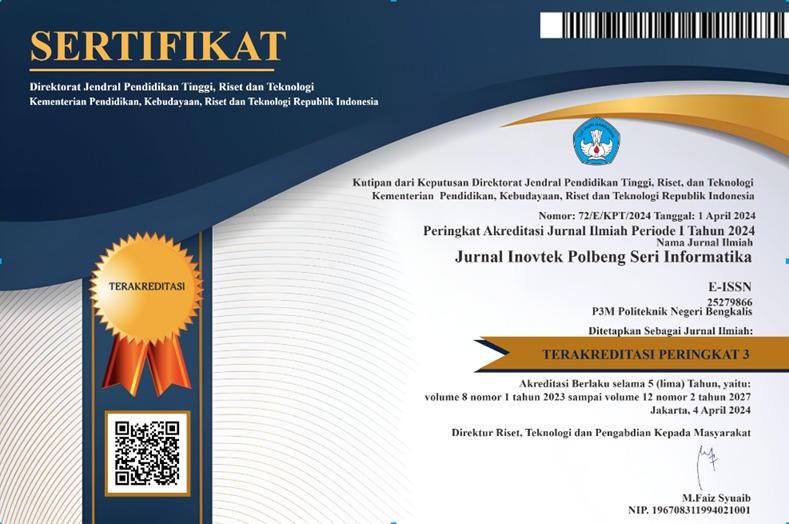Implementation of Convolutional Neural Network Algorithm in Recyclable Waste Recognition to Support Environmental Management
DOI:
https://doi.org/10.35314/drcjhg64Keywords:
waste management, image classification, Convolutional Neural Network, MobileNetV2Abstract
Waste remains one of the unresolved environmental problems, primarily due to ineffective waste management in sorting and recycling processes. Many individuals are unaware of or do not have the time to identify recyclable types of waste. This study aims to develop a web-based system capable of automatically classifying waste types to support raising public awareness of the importance of recycling. The method used is a CNN with a total of 1,800 images divided into six classes: glass, paper, metal, plastic, organic, and residual. The dataset is split into 1,296 images for training, 144 for validation, and 360 for testing. Unlike previous studies that classified only two to three types of waste or were not web-based, this system combines classification of six categories with an interactive web interface that can be directly used by the public. The results show that the developed model achieved an accuracy of 90%, with the best performance in classifying organic waste. However, the model still has limitations such as sensitivity to variations in lighting, varying image capture angles, and visual similarities among certain waste types that can affect classification accuracy. These findings indicate that the proposed system has the potential to help the community manage waste more effectively and sustainably.
Downloads
Downloads
Published
Issue
Section
License
Copyright (c) 2025 INOVTEK Polbeng - Seri Informatika

This work is licensed under a Creative Commons Attribution-NonCommercial-ShareAlike 4.0 International License.














